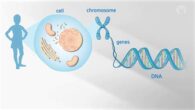Communication is an essential part of everyday life, and for some individuals, it doesn’t come as easily as it does for others. This is where the art of conversation comes in, and speech-language pathologists (SLPs) play a crucial role in helping people overcome communication challenges. In this blog post, we will explore the world of speech-language pathology, from understanding the field and the importance of communication skills in our daily lives to the qualities and skills required to become an SLP. We will also delve into the education and training path, specializations within the field, the assessment process, creating effective therapy plans, and the use of technology and resources in speech therapy. Additionally, we’ll discuss working with different age groups and communication challenges, as well as the professional outlook and career opportunities for SLPs. Whether you’re interested in pursuing a career in speech-language pathology or simply want to learn more about this fascinating field, this blog post will provide valuable insights and information.
Table of Contents
Understanding Speech-Language Pathology
Speech-Language Pathology (SLP) is a field that deals with the diagnosis, treatment, and management of individuals with communication and swallowing disorders. SLPs, also known as speech therapists, work with people of all ages to help them overcome language, speech, and swallowing difficulties. They play a crucial role in improving the quality of life for individuals with communication disorders.
In order to become an SLP, one must have a strong educational background in speech-language pathology, linguistics, psychology, and other related fields. SLPs must also possess qualities such as empathy, patience, and excellent communication skills to effectively work with their clients.
Understanding the assessment process is an essential part of speech-language pathology. SLPs use various tools and techniques to evaluate the speech, language, and swallowing abilities of their clients. This assessment helps in formulating personalized therapy plans to address the specific needs of each individual.
Speech therapists also utilize technology and resources to enhance their therapy sessions. From interactive apps to assistive devices, SLPs are constantly integrating new tools to improve the outcomes of their clients.
Importance of Communication Skills in Everyday Life
Communication skills are an essential part of our everyday lives. Whether it’s verbal, nonverbal, written, or visual, effective communication is crucial in all areas of life. From personal relationships to professional interactions, the ability to convey thoughts, ideas, and emotions is a fundamental skill that impacts every aspect of our existence. Strong communication skills contribute to successful social interactions, clear understanding, and efficient problem-solving.
Communication skills are especially important in professional settings. The ability to articulate ideas clearly, actively listen, and provide constructive feedback are highly valued traits in the workplace. Effective communication fosters a positive work environment, facilitates teamwork, and ultimately leads to greater productivity and success. In addition, strong communication skills are essential for building and maintaining professional relationships, negotiating, and influencing others.
Beyond the workplace, communication skills are crucial in personal relationships. Whether it’s expressing emotions to a loved one, resolving conflicts with friends, or listening to family members, effective communication is the cornerstone of healthy and fulfilling relationships. Without strong communication skills, misunderstandings, misinterpretations, and conflicts can arise, impacting the quality of relationships and overall well-being.
In conclusion, the importance of communication skills in everyday life cannot be overstated. Whether it’s in our personal or professional lives, the ability to communicate effectively is a key factor in our success and happiness. Developing and honing these skills is an investment that yields immense rewards in all aspects of our lives.
Qualities and Skills Required to Become an SLP
When considering a career as a Speech-Language Pathologist, it is important to possess strong interpersonal skills in order to effectively communicate and connect with clients. Being able to empathize and understand the needs of individuals with communication disorders is crucial in providing quality care. SLPs must also have excellent listening skills to accurately assess and understand the needs of their clients.
In addition to interpersonal skills, having a strong knowledge base in speech and language development, anatomy, and physiology is essential. SLPs need to have a deep understanding of the mechanics of speech and language in order to diagnose and treat a wide range of communication disorders.
Furthermore, SLPs must possess patience and flexibility as they work with clients who may progress at different rates and respond to various treatment approaches. It is important for SLPs to tailor their therapy plans to meet the unique needs of each individual, requiring an adaptable and creative approach.
Lastly, critical thinking skills and the ability to problem-solve are vital for SLPs, as they are constantly assessing and adjusting their treatment plans based on the progress of their clients. Continuously evaluating and refining their methods is crucial for delivering the best possible care for those with communication disorders.
Exploring the Education and Training Path
When it comes to pursuing a career in Speech-Language Pathology (SLP), there are several important factors to consider. One of the most crucial aspects is the education and training path that one must undergo to become a qualified SLP. The journey to becoming an SLP requires a strong commitment to education and professional development, as well as a passion for helping individuals with communication disorders.
Aspiring SLPs must first complete a bachelor’s degree in a related field, such as communication sciences and disorders, before moving on to a master’s degree program in speech-language pathology. This advanced degree provides students with the essential knowledge and skills needed to assess, diagnose, and treat individuals with communication and swallowing disorders. In addition to formal education, SLPs must also complete a clinical fellowship, which involves supervised practical experience in a clinical setting.
During their education and training, future SLPs will also have the opportunity to gain specialized knowledge in various areas of speech-language pathology, such as pediatric speech disorders, adult neurogenic communication disorders, and augmentative and alternative communication. This specialized training allows SLPs to tailor their expertise to specific populations and communication challenges, ensuring they are fully equipped to provide comprehensive care to their future clients.
Overall, the education and training path for aspiring SLPs is a comprehensive and rigorous process that prepares individuals to make a meaningful impact in the lives of those with communication disorders. By investing in high-quality education and hands-on training, SLPs can develop the skills and expertise needed to effectively assess, diagnose, and treat a wide range of communication and swallowing disorders.
Specializations within Speech-Language Pathology
When it comes to the field of Speech-Language Pathology (SLP), there are numerous specializations within the profession that cater to the diverse needs of individuals with communication disorders. One of the most common specializations is in the area of pediatric SLP. This involves working with children who have speech and language delays or disorders, as well as those with feeding and swallowing difficulties. Pediatric SLPs are trained to assess and diagnose these issues and provide therapy to help children improve their communication and feeding skills.
Another specialization within SLP is in the area of adult neurogenic communication disorders. This involves working with adults who have experienced brain injuries, strokes, or degenerative neurological conditions that impact their speech, language, and cognitive abilities. SLPs specializing in this area are trained to assess and treat a wide range of communication and cognitive impairments that can result from neurological damage.
Fluency disorders, such as stuttering, also fall under the umbrella of speech-language pathology specializations. SLPs who focus on fluency disorders work with individuals of all ages to improve their fluency and manage their stuttering through various therapy approaches. These SLPs help their clients develop strategies to enhance their communication confidence and overall fluency.
Lastly, voice disorders are another area of specialization within SLP. SLPs who work with individuals with voice disorders help assess and treat various vocal impairments, such as hoarseness, pitch, and volume problems. They use a combination of therapy techniques to improve voice quality and enhance vocal health.
Assessment Process and Tools Used by SLPs
Speech-Language Pathologists (SLPs) play a crucial role in assessing and diagnosing communication disorders in individuals of all ages. The assessment process begins with gathering relevant information about the client’s medical history, development, and communication skills. SLPs also conduct interviews with the client and their family members to understand the nature and extent of the communication challenges they are facing. This initial assessment helps SLPs in determining the appropriate tools and methods to use for a comprehensive evaluation.
One of the tools commonly used by SLPs during the assessment process is standardized tests. These tests are designed to measure various aspects of communication, including language, articulation, fluency, and voice. By administering these tests, SLPs can gain valuable insights into the client’s strengths and weaknesses, which can guide the development of tailored therapy plans. In addition to standardized tests, SLPs also use informal assessments such as observation, language samples, and dynamic assessment to gather a holistic view of the client’s communication abilities.
Furthermore, SLPs utilize technological tools to aid in the assessment process. These may include computer-based programs for language and speech analysis, as well as tools for video recording and playback to capture communication patterns. The use of technology not only enhances the accuracy of assessments but also allows SLPs to monitor the progress of clients over time.
Overall, the assessment process and tools used by SLPs are crucial in identifying communication disorders and creating effective intervention plans. Through a combination of comprehensive evaluation and the use of diverse assessment tools, SLPs can provide personalized and evidence-based care to individuals with speech and language difficulties.
Creating Effective Therapy Plans for Communication Disorders
When working with individuals who have communication disorders, it is crucial to create effective therapy plans that address their specific needs and challenges. This involves a thorough assessment of their communication abilities, understanding their strengths and weaknesses, and developing a comprehensive plan to help them improve their communication skills.
Therapy plans for communication disorders often include a combination of speech and language exercises, cognitive-communication strategies, and use of augmentative and alternative communication (AAC) devices. These plans are tailored to each individual’s unique needs, and take into account factors such as their age, severity of their disorder, and opportunities for improvement in communication settings.
It is essential for speech-language pathologists (SLPs) to collaborate closely with their clients, their families, and other professionals involved in their care, to ensure that the therapy plans are effective and well-suited to the individual’s goals and aspirations. Flexibility, adaptability, and ongoing assessment are key components of creating therapy plans for communication disorders, as progress and needs may change over time.
By creating effective therapy plans for communication disorders, SLPs can help individuals improve their communication skills, enhance their quality of life, and achieve their full potential in their personal, academic, and professional endeavors.
Using Technology and Resources in Speech Therapy
Technology has become increasingly integrated into the field of speech therapy, offering new and innovative resources to aid in the treatment of communication disorders. Speech-Language Pathologists (SLPs) have access to a wide range of tools and devices that can help improve the language and speech abilities of their clients.
One of the most commonly used resources in speech therapy is Augmentative and Alternative Communication (AAC) devices. These tools allow individuals with severe communication impairments to express themselves using symbols, pictures, or electronic devices. AAC devices can be customized to meet the specific needs of each client, making it an essential resource for SLPs working with nonverbal or minimally verbal individuals.
Another important use of technology in speech therapy is through the use of computer-based therapy programs. These programs are designed to provide interactive and engaging activities that target various speech and language goals. SLPs can use these programs to create personalized therapy plans for their clients and monitor their progress over time.
Furthermore, the advent of teletherapy has revolutionized the way SLPs deliver their services. Through video conferencing and online platforms, SLPs can now reach clients in remote or underserved areas, providing them with access to much-needed therapy and intervention services.
Working with Different Age Groups and Communication Challenges
Working as a speech-language pathologist (SLP) requires the ability to adapt to the unique needs of individuals across various age groups. Whether working with young children or seniors, SLPs must be prepared to address a wide range of communication challenges.
At the core of working with different age groups is the understanding that communication disorders manifest differently at different stages of life. For example, children may struggle with language development, while older adults may face issues related to stroke or degenerative diseases.
In addition to understanding the biological and developmental factors that influence communication, SLPs must also possess the patience and empathy needed to work with individuals across the lifespan. This means being able to tailor therapy techniques and strategies based on the unique needs and capabilities of each age group.
Overall, working with different age groups and communication challenges requires SLPs to be versatile, compassionate, and well-versed in a variety of therapeutic approaches.
Professional Outlook and Career Opportunities for SLPs
Speech-language pathologists (SLPs) play a crucial role in helping individuals with communication and swallowing disorders. Working in this field can be incredibly rewarding, as it offers a wide range of professional opportunities and the chance to make a positive impact on the lives of others.
One of the key advantages of pursuing a career as an SLP is the strong job outlook. According to the Bureau of Labor Statistics, the demand for SLPs is expected to grow significantly in the coming years, with employment projected to increase much faster than the average for all occupations. This high demand for SLPs is driven by several factors, including an aging population that may experience speech and language disorders as well as increased awareness and diagnosis of communication and swallowing disorders in young children.
Another appealing aspect of a career in speech-language pathology is the diverse range of settings in which SLPs can work. Whether it’s in schools, hospitals, rehabilitation centers, or private practice, SLPs have the opportunity to choose a work environment that aligns with their interests and professional goals. This flexibility allows SLPs to explore different specialties and develop expertise in specific areas such as pediatric speech therapy, adult neurogenic disorders, or voice and resonance disorders.
Furthermore, the field of speech-language pathology offers a competitive salary and benefits package, making it an attractive career choice for many individuals. SLPs also have the opportunity to advance their careers through continuing education, specialization certifications, and leadership roles within their organizations, providing a clear pathway for professional growth and development.






